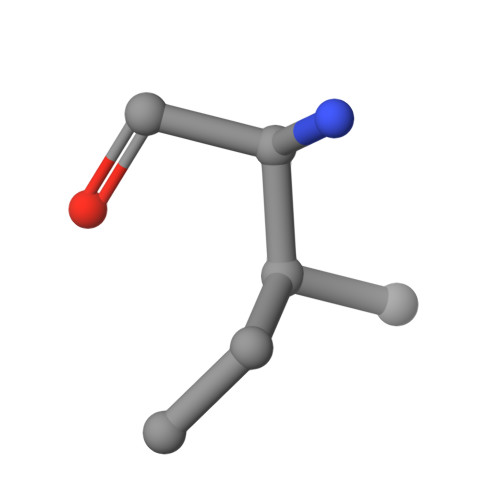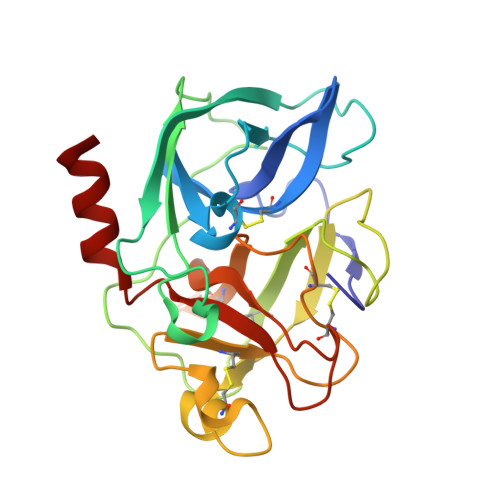Structural analyses on intermediates in serine protease catalysis
Liu, B., Schofield, C.J., Wilmouth, R.C.(2006) J Biological Chem 281: 24024-24035
- PubMed: 16754679
- DOI: https://doi.org/10.1074/jbc.M600495200
- Primary Citation of Related Structures:
2BB4, 2BD2, 2BD3, 2BD4, 2BD5, 2BD7, 2BD8, 2BD9, 2BDA, 2BDB, 2BDC, 2H1U - PubMed Abstract:
Although the subject of many studies, detailed structural information on aspects of the catalytic cycle of serine proteases is lacking. Crystallographic analyses were performed in which an acyl-enzyme complex, formed from elastase and a peptide, was reacted with a series of nucleophilic dipeptides. Multiple analyses led to electron density maps consistent with the formation of a tetrahedral species. In certain cases, apparent peptide bond formation at the active site was observed, and the electron density maps suggested production of a cis-amide rather than a trans-amide. Evidence for a cis-amide configuration was also observed in the noncovalent complex between elastase and an alpha1-antitrypsin-derived tetrapeptide. Although there are caveats on the relevance of the crystallographic data to solution catalysis, the results enable detailed proposals for the pathway of the acylation step to be made. At least in some cases, it is proposed that the alcohol of Ser-195 may preferentially attack the carbonyl of the cis-amide form of the substrate, in a stereoelectronically favored manner, to give a tetrahedral oxyanion intermediate, which undergoes N-inversion and/or C-N bond rotation to enable protonation of the leaving group nitrogen. The mechanistic proposals may have consequences for protease inhibition, in particular for the design of high energy intermediate analogues.
- School of Biological Sciences, Nanyang Technological University, 60 Nanyang Drive, Singapore 637551, Singapore.
Organizational Affiliation:



















